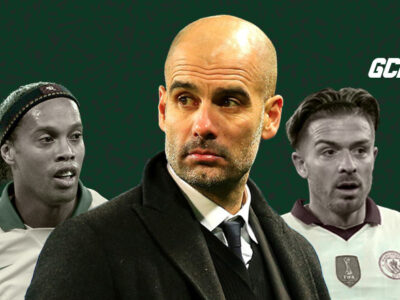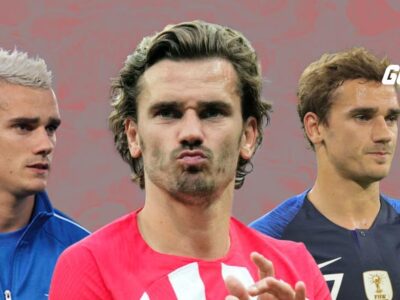Few countries in the world can match Brazil’s ability to produce an abundance of footballing talent.
From Pelé and Sócrates to Ronaldo Nazário and Ronaldinho, and to the current superstars like Neymar Jr. and Thiago Silva, the South American powerhouse has always been ever present at the summit of world football.
This evergreen source of talent cultivated one of the most scintillating players to emerge on the professional scene in Brazil. The Kaka regen: Alexandre Pato.
Becoming the new Kaka
Alexandre Pato started his professional football career with Sport Club Internacional, a prominent Brazilian football club based in Porto Alegre, Rio Grande do Sul.
In 2006, at the tender age of 16, Pato made his debut for the club, capturing the attention of fans and pundits alike with his extraordinary performances.

Drawing comparisons to the legendary Kaka, Pato’s electrifying pace, exceptional dribbling skills, and clinical finishing abilities at such a young age showed the promise of a future Ballon d’Or winner.
Joining AC Milan
After his stellar performance in the Brazilian top flight, Pato earned a move to European football with AC Milan in 2007 for a reported transfer fee of around €22 million.
This fee might seem small, considering the current state of the transfer fees. But as of the time of the transfer, it was rare to see a club spend such an amount of money on a teenager.
Despite being just 18 years old at the time of his transfer, Pato made an immediate impact at AC Milan.

He scored on his Serie A debut on January 13, 2008, against Napoli, just 24 seconds into the match, making it one of the fastest debut goals in Serie A history. He also made his mark in the UEFA Champions League during his debut season with AC Milan.
Pato’s performances in his debut season earned him widespread acclaim and established him as one of the most promising young talents in world football.
He formed a formidable attacking partnership with players like Kaka and Clarence Seedorf, contributing goals and assists to the team.
However, injuries interrupted his season, limiting his playing time and impacting his form. Pato’s third season with AC Milan saw him face further injury setbacks, which hampered his consistency and limited his impact on the pitch.
Despite this, he scored crucial goals for the team and showcased glimpses of his immense talent.
That goal against Barcelona
Throughout his stint at AC Milan, Pato had mixed outcomes in terms of his overall involvement.
Lack of availability due to fitness issues hampered his performance, but he still impacted matches often, as is often the case with top players.
His star-making moment came during the match against Barcelona in the UEFA Champions League quarter-finals.
The goal came in the 1st half of the match of the match at the San Siro.
Pato received the ball near the halfway line, dribbled past a couple of Barcelona defenders with his trademark speed and agility, and then calmly slotted the ball past the Barcelona goalkeeper, Victor Valdés.
That first goal from Alexandre Pato against Barcelona… 😍 pic.twitter.com/p7Q3A1eqwk
— SPORTbible (@sportbible) January 21, 2022
The goal demonstrated Pato’s exceptional talent and ability to perform on the big stage against one of the best teams in the world. That goal still blows many fans’ minds to smithereens to this day.
Battle with injuries
Some of the notable injuries Pato faced during his AC Milan stint include muscular injuries, which are common among players who rely on speed and agility.
Any strain or tear in the hamstring muscles can severely limit a player’s ability to sprint and change direction. Michael Owen’s decline and lack of explosiveness came after his injuries. Eden Hazard was never the same after Chelsea.

Ultimately, his struggle with injuries played a significant role in his departure from the club and hindered his progression as a top-level footballer during that period.
The prodigal son returns home
Things did not go as anticipated for Pato in Europe, and it seemed like the time in one’s life and career path when a change of scenery was due.
In January 2013, he moved to Corinthians for a reported transfer fee of €15 million.
Pato’s move to Corinthians came with high expectations, as the club and its supporters hoped he would rediscover his best form and lead the team to success in domestic and international competitions.

During his time at Corinthians, Pato showed flashes of his talent but struggled to perform at his best consistently. He faced competition for playing time in a competitive squad and had to deal with injuries and fitness issues.
Also, he had a run-in with the Corinthian fans due to several issues, such as inconsistency, fitness issues, high expectations, and a perceived lack of commitment.
His coach at that time, Tite, often had to come to his defense, explaining that his inconsistencies were a result of the constant pressure on him to perform at his very best.
When he attempted that awful panenka in a crucial game in the Copa Do Brasil, you could read the writing on the wall for his career.
Pato’s unsuccessful loan moves
After his loan spell at Corinthians, Pato joined São Paulo on loan in 2014. He then joined Chelsea on loan during the 2015-2016 Premier League season.

However, his time at Chelsea was largely disappointing, as he struggled to adapt to the demands of English football and failed to make a significant impact.
Following his loan at Chelsea, he moved to Villarreal for the 2016-2017 La Liga season.
These loan moves allowed Pato to experience different leagues and playing styles while attempting to revitalize his career.
However, injuries and inconsistency often plagued him, preventing him from reaching the heights expected of him earlier in his career.
Pato Heads to China
After a series of unsuccessful loan moves, Pato found solace in China as Pato transferred to the Chinese club Tianjin Quanjian.
There were few positives during his time there, as inconsistency and a series of missed big chances were the highlights of his spell at the Chinese outfit.

Pato returned to São Paulo, where he performed pretty well. After his contract ran out, he signed with the Orlando City SC.
After two seasons, Pato rejoined São Paulo. This transfer was a depiction of his inconsistencies and struggles with fitness.
Where is Alexander Pato Now?
Only a few players can say they have had a more challenging career than Pato’s. From being one of the most promising stars at a tender age to being one of the worst players throughout the latter stages of his career, Pato could have had much better.
His disappearance into obscurity is enough to convince people that Alexandre Pato retired a few years back. Currently playing for São Paulo, Pato’s professional football career is a mirage of what could have been. Now that his time at the top is all but over, we’ll continue monitoring his career as he decides what to do next.
Who wrote this?
Ebuka is a tech enthusiast, writer, and eSports guru currently working with a team of daring Africans to revolutionize the writing scene. He enjoys answering questions, brainstorming new ideas, and discussing the future of sports and esports.





















